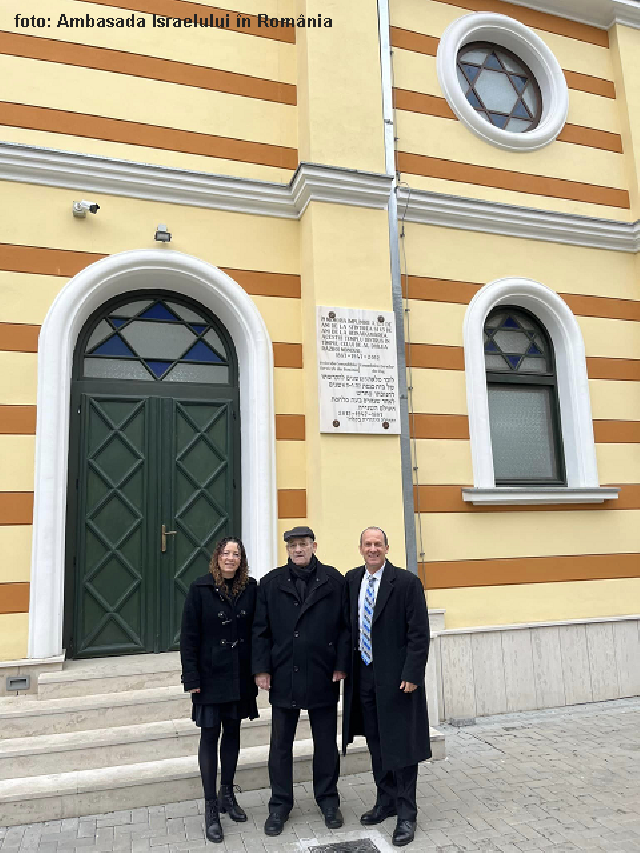Cluj-Napoca, the Heart of Transylvania
Today we discover a city that many say is representative for the entire story of Transylvania, Cluj-Napoca

Daniel Onea, 18.05.2023, 14:00
Today we discover a city that many say is representative for the entire story of Transylvania. Cluj-Napoca is a major tourist destination, both with its heritage monument buildings, and the events it organizes. It is part of the UNESCO creative city network as a City of Film, along with 20 other cities around the globe. It sports a history over 2,000 years long, according to Manuela Cimpean, head of the City Hall tourist division. At the same time, it is a vibrant place, with over 100,000 students, it is European Youth Capital, and European City of Sports:
“Placed on the border between east and west, in the heart of Transylvania, Cluj is a multicultural, multi-ethnic, and multi-confessinoal center, which makes it unique. At the same time, it is a green city, and an IT center, concerned with sustainability and innovation. If we were to talk about a tour of the historic center, we would naturally start with Museum Square, also known as Little Square. It is the center of the first fortified venue of the medieval city, built after the Tatar-Mongol invasion of the 1200s. As the main objectives, I would mention the National History Museum of Transylvania, hence the name Museum Square, the Franciscan church and monastery, and the Carolina Obelisk, which is the first lay monument in the city. Then we pass by Matia House, which was the birth place of the prince of Transylvania and king of Hungary, a symbol of the multiculturality of Cluj. Matthias Corvinus was son to John Hunyadi and to Hungarian noblewoman Elisabeth Szilagyi. It is the only civilian building from the Gothic period, in the 1440s.
We then get to Union Square, or Grand Square, a place where some of the most representative medieval monuments can be found:
“At that time, it was the largest square in CEE, developed along with the second fortified venue in the medieval citadel. This happened at a time of flourishing for Cluj, when it was recognized as an urban republic, aka Treasure City. The Roman site dug up by archaeologists shows that this was the center of the economic, spiritual, and administrative life of the city. The market is dominated by the St. Michael Roman Catholic Church, with construction work starting in 1316, lasting over 100 years. It is the most imposing Gothic edifice in Romania, after the Black Church in Brasov, the first full version of the Transylvanian type of box building for a church, and has the highest steeple in all Romania. It is 80 m high, along with the cross on top. Union Square also boasts the Matthias Corvinus Statuary Ensemble, the Banffy Palace, and the Rhedey palace, which was at one point the home to of the most beautiful women in Cluj, who went on to become the great-great-grandmother of King Charles of the UK. Cluj has many more tourist attractions, but statistically speaking the most visited is the Botanical Garden.
Cluj-Napoca is part of the UNESCO creative city network thanks to its TIFF festival, according to Manuela Cimpean, head of tourism for City Hall. This is one of the main annual events, but the cultural agenda is very rich:
“The series of summer events and the 2023 tourist season open right this week with Cluj Days, an event in its 11th edition. Last year we had 250,000 participants. This year, the event covers 50 locations. There are activities for all ages, for all tastes, concerts, plays, opera, film, exhibitions, competitions, sports and cuisine, guided tours and treasure hunts, an ancient and a medieval camp, an adventure area, photo booths, virtual experiences, video mapping, and many more. The series of events continues with the TIFF – the Transylvania International Film Festival, with the Sport Festival, Jazz in the Park, Hungarian Culture Days, Opera Aperta, and, of course, with Untold, the biggest festival of its kind.
Any Cluj experience should start with the Tourist Information Center. Here, Manuela Cimpean awaits you with lots of printed materials, but also with recommendations for an unforgettable vacation:
“We have daily tours in English, which are held through an association that works with Cluj-Napoca City Hall, called Cluj Guided Tours. These are free guided tours, two hours long, starting at 11 AM and 6 PM. They cover the main tourist objectives in the historic center of the city. In addition to these, City Hall provides official delegations, partners, and other guests, with audio guides in English. The Cluj Tourist Information Center offers free Internet access, and tourist materials in English, French, German, Hungarian, Spanish, Hebrew, as well as Korean, Turkish, Japanese, and Chinese. We have a wide palette of materials, from fliers, to maps, to brochures, magazines, and others. As an original offer, we have VR tours. We have a VR chair, and Oculus goggles that simulate a roller coaster tour of Citadel Hill, a skiing trip on a nearby hill, or a balloon flight above the historic city.
Cluj-Napoca is a good starting point for other sights and tourist routes in the county and in Transylvania, Maramureș and beyond.
Accessibility is very good thanks to the International Airport, which is the largest regional airport in Romania. As an original tour, I mention the Hoia-Baciu Forest, famous for paranormal phenomena and those related to the presence of UFOs. Also, close to Cluj-Napoca is Salina Turda, the most visited tourist attraction in Romania. I also mention the Turzii Gorge, the Scarișoara Glacier, and the Apuseni Natural Park. Then we have a beautiful area of lakes and mountain resorts. There are traditional villages around the city. Bánffy Castle is famous for its historical values, but also for the Electric Castle festival, we continue with the Nicula Monastery, and, if we want to go further, there are the fortified churches of Transylvania and many others. Since we are still in Transylvania, we can also talk about the myth of Dracula. In Bram Stoker’s novel of the same name, Cluj was the protagonist’s starting point towards Dracula’s castle.
Generally speaking, in the city of Cluj-Napoca you will find various accommodation units for all budgets. However, if you want to get to know the city at a slow pace, it is advisable to avoid the period when the major events are organized, when the influx of tourists is very high.






























